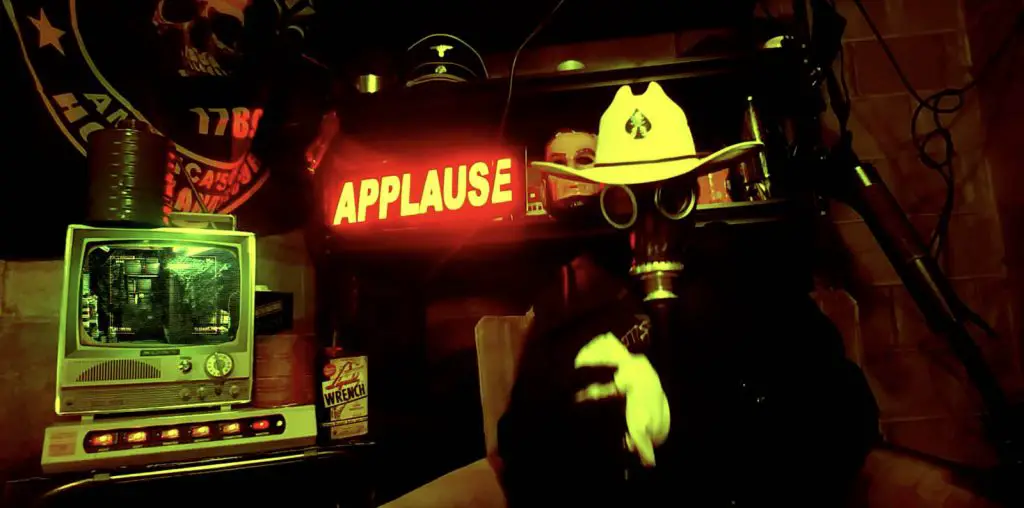
BOOTLEG FILES 466: “The Invader” (1936 British feature starring Buster Keaton).
LAST SEEN: The entire film is on YouTube.
AMERICAN HOME VIDEO: On a few public domain labels.
REASON FOR BOOTLEG STATUS: One of the more obscure offerings from a comedy icon.
CHANCES OF SEEING A COMMERCIAL DVD RELEASE: Not for some time.
By 1934, Buster Keaton’s life had virtually derailed. A skein of professional and personal problems had a deleterious effect on the comedy genius, and he responded to his situation by losing himself in alcoholism. His out-of-control drinking played a major role in his humiliating 1933 dismissal from MGM, where he was a major comedy star, and his health deteriorated so rapidly that he was institutionalized in a sanitarium. During one of his alcoholic binges, Keaton eloped to Mexico with his nurse Mae Scriven – though later claimed he was unaware of what he was doing. (The couple divorced in 1936.)
Not surprisingly, no major Hollywood studio was eager to work with Keaton. He managed to secure employment with the cheapjack Educational Pictures, where he starred in a series of two-reelers. But Educational had a reputation of being the dumping ground for has-been comics, and Keaton realized that his career needed a major change of direction.
In early 1934, Keaton received a surprise offer to star in a comedy feature in France. Keaton arrived in Paris to begin work on “Le Roi des Champs-Élysées” when another European offer came his way: Polish-born producer Sam Spiegel, who set up operations in London, wanted Keaton as the star of a feature film. Spiegel also promised to give Keaton creative control over the material, and Keaton agreed to the deal.
Why would Spiegel take a chance on Keaton? For starters, Keaton came cheaply: under Spiegel’s deal, he would only earn a measly £12,000. Also, relatively few British films in the mid-1930s managed to get release in the lucrative American theatrical market unless they included actors who were familiar to audiences across the Atlantic. During this period, a number of American actors were imported to appear in low-budget British flicks – and even if they weren’t quite right for their roles, their presence guaranteed that the films would receive some kind of U.S. release. For all of his problems, Keaton still maintained name recognition with U.S. audiences.
Closer to its London-based home, “The Invader” served as purpose as being part of a genre known as “quota quickies,” which consisted of low-budget British films commissioned by the U.S. distributors that dominated the U.K. theatrical film channels. Since the law of that era required British cinemas to show a specific quota of British-made films, “The Invader” could help fill that gap.
Keaton arrived in London in mid-1934, but he did not stay very long. The resulting film, titled “The Invader,” took less than a month to shoot. And it looked it. Indeed, the film was so shabby that one could believe that Keaton and his collaborators sneaked into a studio one night and quickly shot the entire production in a hurried rush.
“The Invader” takes place in a sleepy village along the Spanish coast. The cantina owner Gonzalo (played by Welsh actor Lyn Harding) is insanely jealous over the lovely Lupita (played by Mexican actress and one-time silent film star Lupita Tovar). Indeed, Gonzalo boasts that he would kill anyone who dares to woo his lovely lady. Lupita, however, has a secret lover, but that guy is not eager to endure Gonzalo’s homicidal wrath. Thus, a plot is hatched: Lupita will trick an unsuspecting rube to fall in love with her, which would then spark Gonzalo’s fury. Gonzalo would kill the phony lover and go to prison, freeing Lupita to pursue her own passions.
Ah, but where to find an unsuspecting fool for this charade? Enter Keaton as Leander Proudfoot, a wealthy (but dim) American who arrives in the village port via his yacht. Keaton tries to be inconspicuous by dressing like a stereotypical Spanish caballero, but the locals recognize him as a gringo and he is swarmed by a wave of peddlers and vendors. As a result, Keaton is almost immediately burdened with a surplus of souvenirs, including a baby burro.
Keaton spies Lupita in the cantina and is immediately smitten. He tries to woo her on the dance floor and through a midnight serenade, but he fails. But, somehow, Lupita realizes that Leander is a decent and loving man – not to mention a wealthy one – and she falls for him. But Gonzalo gets wind of Lupita’s infidelity, and the American is challenged to a sunrise duel.
Keaton’s performance throughout “The Invader” is so weak and unfocused that I am not certain whether he was inebriated or physically ill during the production or whether he had no enthusiasm for the project. Although celebrated as the “Great Stoneface,” Keaton’s stolid persona goes to such an extreme that he appears to be numb to his surroundings. His lack of connection to the material and his fellow cast members throws the film off-kilter, and a number of comedy sequences – including a slapstick dance and a chase through the village – are executed in such a slovenly manner that it is hard to imagine the man at the center of the film was responsible for creating “The General” less than a decade earlier.
During the first half of the film, Keaton keeps his dialogue to the barest of minimums – this would make sense, because his character did not speak Spanish. (Never mind that everyone in the Spanish village spoke clear English.) But in the second half, Keaton offers a surprise by performing the novelty tune “In an Old Spanish Town” with a delightful singing voice. Indeed, Keaton’s singing is so pleasant that is somewhat strange that he did not incorporate more musical numbers into his sound-era films.
But Keaton was not the only one who was off his game. The resulting work ran much shorter than anticipated, thus requiring the inclusion of a pair of dance numbers featuring a squad of pretty (though rhythm-absent) young ladies. These dance sequences had nothing to do with the plot, and the clumsiness of the choreography turned out to be funnier than Keaton’s antics.
Ultimately, “The Invader” ended in chaos when Spiegel ran out of funds to pay his cast and crew. He forged some checks, but his action was quickly discovered and he was arrested. After serving a brief jail sentence, British authorities deported him.
Ironically, “The Invader” was distributed in British cinemas by MGM, Keaton’s former studio. But MGM wanted nothing to do with the U.S. release, and J.H. Hoffberg’s tiny distribution company snagged the U.S. rights. But Hoffberg felt “The Invader” was an unsatisfactory title, and the film was renamed “An Old Spanish Custom” before it arrived in U.S. theaters in early 1936.
Although “The Invader” did nothing to resurrect Keaton’s career in the U.S., the star maintained some fondness for the material. In 1939, Keaton recycled the plot and some of the gags for a two-reel comedy called “Pest from the West,” which was produced and released by Columbia Pictures.
The film’s American reincarnation as “An Old Spanish Custom” did not have a copyright on the release print. As a result, scratchy prints of “An Old Spanish Custom” have turned up on a few public domain labels; that print can also be found on YouTube. There has been no U.K. DVD release of “The Invader,” and I am not certain who currently controls the British copyright ownership of the film.
To date, no effort has been made to restore “The Invader.” And considering its abysmal quality, it is unlikely that any effort will be undertaken in the near future. But considering the film is such a stinker, which may not be such a bad thing!
IMPORTANT NOTICE: The unauthorized duplication and distribution of copyright-protected material, either for crass commercial purposes or profit-free s***s and giggles, is not something that the entertainment industry appreciates. On occasion, law enforcement personnel boost their arrest quotas by collaring cheery cinephiles engaged in such activities. So if you are going to copy and distribute bootleg material, a word to the wise: don’t get caught. Oddly, the purchase and ownership of bootleg DVDs is perfectly legal. Go figure!

